Dorsal approach to the metacarpals
1. General considerations
This approach to the metacarpals is indicated for treatment of the following fracture types of the diaphysis and metaphysis:
- Oblique
- Spiral
- Transverse
- Multifragmentary
It can also be used for corrective osteotomies of malunited fractures.
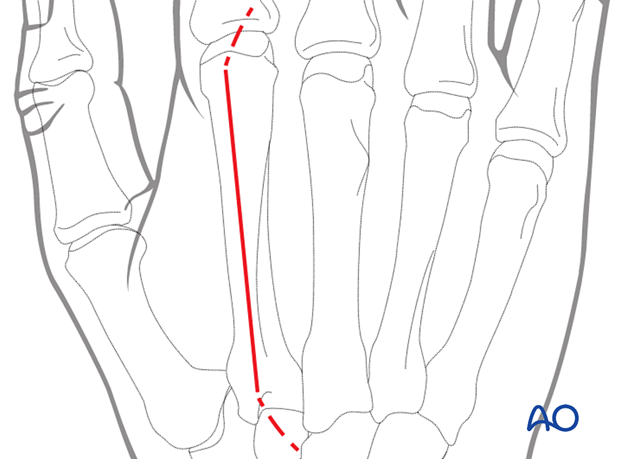
Neighboring metacarpal injuries may be treated through a single incision designed between the metacarpals.
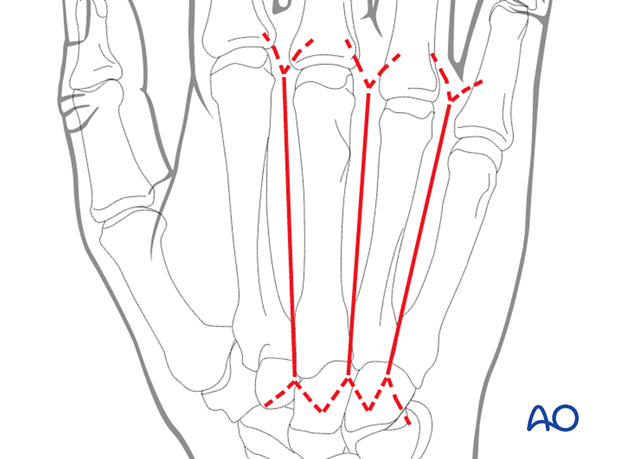
2. Surgical anatomy
The extensor tendons of the 3rd and 4th fingers run dorsally directly over the metacarpals. The extensor tendons of the index and little fingers converge slightly from their metacarpal axes towards the center of the wrist joint.
Be aware of the intertendinous connections, which are located over the distal thirds of the metacarpals.
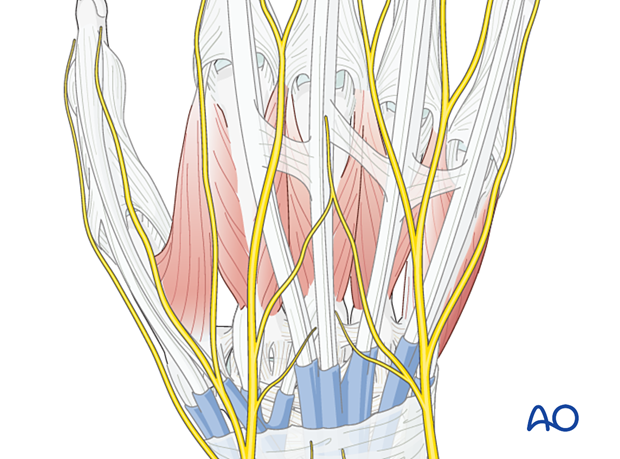
3. Skin incision
Perform a straight longitudinal skin incision not directly over the extensor tendons.
The incisions can be extended proximally and distally in an oblique direction.

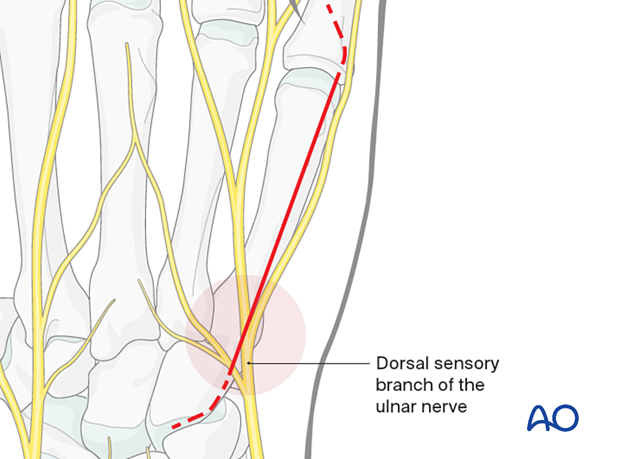
Adjacent metacarpals can be approached with a single skin incision.
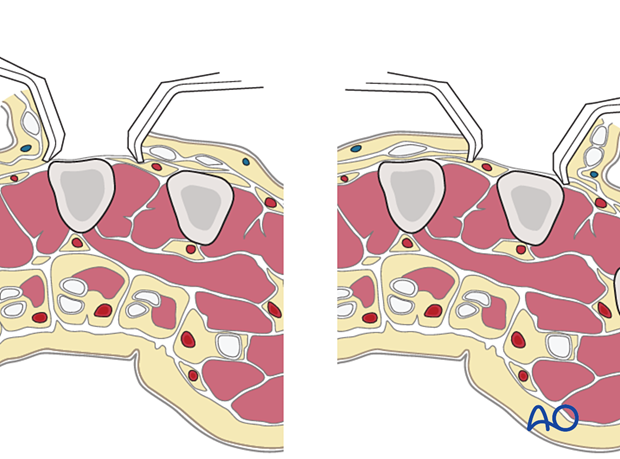
4. Retraction of extensor tendons
Retract the extensor tendons together with the surrounding loose connective tissue.
If necessary intertendinous connections may be incised for full exposure of the distal diaphysis and metaphysis. These need to be repaired at the end of the procedure.
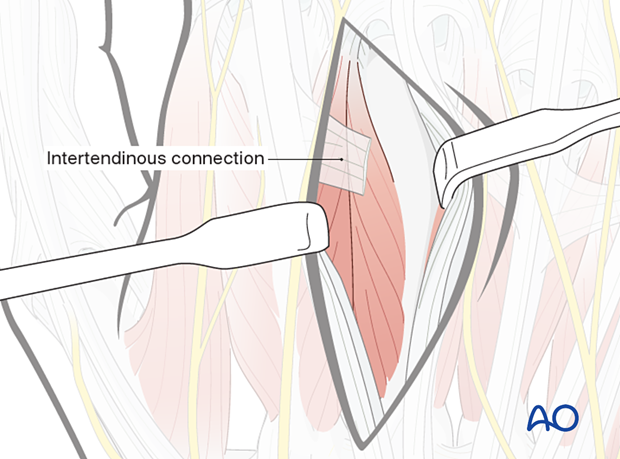
5. Detachment of interosseous muscles
Partially detach the dorsal interosseous muscles from the bone subperiosteally.
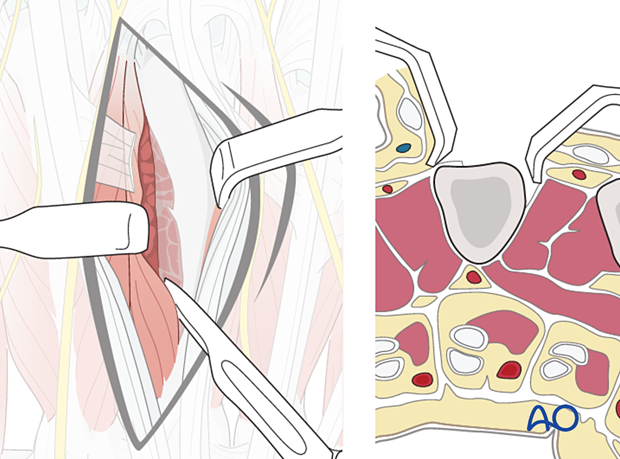
Pitfall: complete muscle detachment
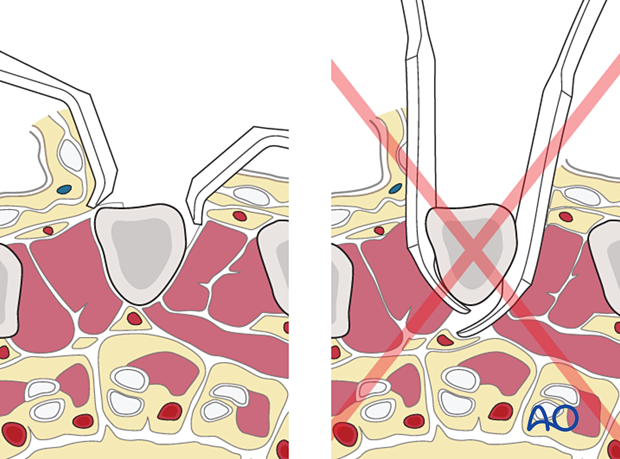
6. Wound closure
Cover the implant with the periosteum as far as possible; this helps minimize contact between the extensor tendons and the implant.
If an intertendinous connection has been cut, it should be repaired.














